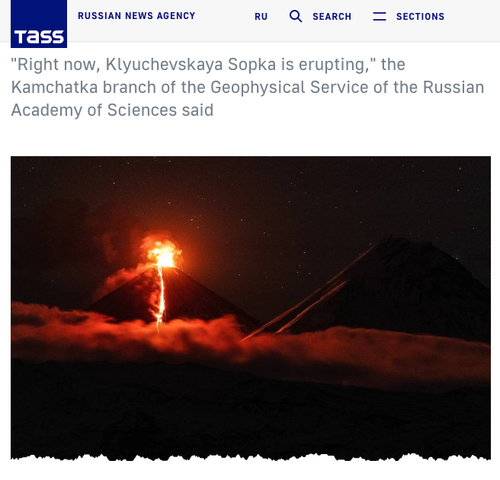


A tsunami triggered by a massive underwater earthquake off the eastern coast of Russia, impacting Hawaii, Alaska, and the U.S. West Coast in the overnight hours, has now led to the eruption of Eurasia's highest and most active volcano, located on the Kamchatka Peninsula.
Russian media Tass News said the 8.7 magnitude earthquake that struck off Russia's Kamchatka was the "largest earthquake since 1952." It cited the Russian Academy of Sciences, which now says the Klyuchevskaya Sopka volcano has begun to erupt shortly after the quake.
"Right now, Klyuchevskaya Sopka is erupting," the Russian federal agency wrote in the post with an accompanying photograph of the volcano's eruption.
Key facts about Klyuchevskaya Sopka:
More footage of the eruption:
Both the tsunami-triggering quake and the volcanic eruption stem from tectonic movements along the Pacific Ring of Fire, particularly the subduction of the Pacific Plate beneath the Okhotsk Plate. This suggests a major stress release event in the Earth's crust.
This kind of event cluster in rapid succession could indicate a larger regional stress redistribution, raising the risk of additional quakes or eruptions in adjacent fault lines or volcanoes (e.g., in the Aleutians, Kuril Islands, or even Japan).

